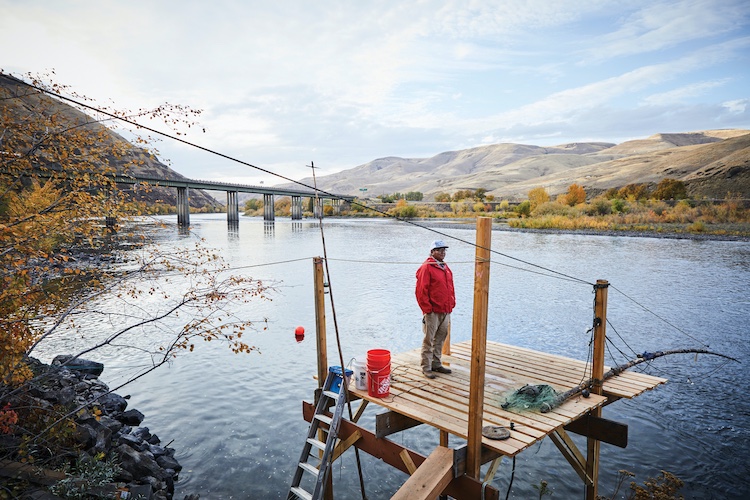the film
forum
library
tutorial
contact
|

|
A Historic Federal Deal Will Determine the Fate of Dams
After Decades of Litigation -- Here's What Could Happen
by Tina Deines
The Cool Down, February 12, 2024
|
"[This] will chart a new course for the federal government."
 The federal government recently offered its support for the removal of four dams on the Lower Snake River in the Pacific Northwest with the goal of restoring wild salmon populations.
The federal government recently offered its support for the removal of four dams on the Lower Snake River in the Pacific Northwest with the goal of restoring wild salmon populations.
On Dec. 14, the Biden administration announced an agreement to work in partnership with tribes and states to restore wild salmon populations, expand tribally sponsored clean energy, and provide stability for communities that rely on the Columbia River system.
The agreement also includes federal government funding of studies on how Lower Snake River dams could be replaced. However, the decision to breach those dams would require an act of Congress, as High Country News reported.
While the dams provide irrigation and hydropower to nearby communities, they have also contributed to the near extinction of 13 salmon and steelhead species, according to The Washington Post. Dwindling salmon populations also negatively affect endangered orcas, who rely on the fish for food.
The government plans to invest $300 million over 10 years to restore native fish and their habitats throughout the Columbia River Basin. A third of this will go to the four Lower River Treaty tribes, Washington, and Oregon, while the remaining funding will go toward hatchery modernization, upgrades, and maintenance.
The Department of Energy is also committing support for the development of at least 1-3 gigawatts of tribally sponsored clean energy projects. If Congress authorizes a breach of the dams, this will help replace the associated power loss.
The agreement follows a September announcement that $200 million will be dispersed to tribes over 20 years to help restore salmon in the Upper Columbia, per High Country News.
The idea of dam removal is nothing new. For instance, a project is already underway to nix four hydroelectric dams along California's Klamath River -- the first was removed in late 2023, while the remaining three are slated to disappear this year. The move is expected to help restore wild salmon populations.
One of the most well-known dam removals in the United States was Washington's Elwha Dam, which was scrapped in 2011 because of flooding, sediment flow disruptions, and salmon migration blockages.
In a recent TikTok video shared by the World Economic Forum, Amy Kober, vice president of communications at the nonprofit American Rivers, said: "It's just transforming that entire river. People are consistently amazed at how fast a river can come back to life when a dam is removed."
As far as the recent project goes, Confederated Tribes of the Warm Springs council chairman Jonathan W. Smith Sr. said in a release, "We are optimistic that this first of its kind Presidential Memorandum on the Columbia Basin will chart a new course for the federal government that will lead to true restoration of our fisheries."
Corinne Sams, Confederated Tribes of the Umatilla Indian Reservation board of trustees member, Columbia River Inter-Tribal Fish Commission chair, and Fish and Wildlife Commission chair also approved of the December agreement.
"As Nimiipuu (Nez Perce) we are bound to the salmon and the rivers -- these are our life sources," Sams said in a statement. "We will not allow extinction to be an option for the salmon, nor for us."
Secretary of the Interior Deb Haaland added: "As we commemorate today's historic milestone, the Biden-Harris Administration remains committed to comprehensive and collaborative basin-wide solutions to restoring salmon and other native fish populations. At every step of the way, tribes will continue to have a seat at the table and be integral in our efforts to restore and protect these precious ecosystems."
Tina Deines
A Historic Federal Deal Will Determine the Fate of Dams After Decades of Litigation -- Here's What Could Happen
The Cool Down, February 12, 2024
See what you can learn
learn more on topics covered in the film
see the video
read the script
learn the songs
discussion forum


 The federal government recently offered its support for the removal of four dams on the Lower Snake River in the Pacific Northwest with the goal of restoring wild salmon populations.
The federal government recently offered its support for the removal of four dams on the Lower Snake River in the Pacific Northwest with the goal of restoring wild salmon populations.
